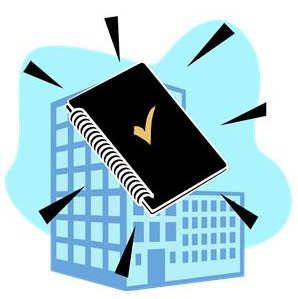Predictive Analytics: It’s Not Just for Review Anymore – eDiscovery Trends

One of the most frequently discussed trends in this year’s annual thought leader interviews that we conducted was the application of analytics (including predictive analytics) to Information Governance. A recent report published in the Richmond Journal of Law & Technology addresses how analytics can be used to optimize Information Governance.
Written by Bennett B. Borden & Jason R. Baron (who was one of our thought leaders discussing that very topic), Finding the Signal in the Noise: Information Governance, Analytics, and the Future of Legal Practice, 20 RICH. J.L. & TECH. 7 (2014) is written for those who are not necessarily experts in the field. It provides a synopsis of why and how predictive coding first emerged in eDiscovery and defines important terms related to the topic, then discusses aspects of an information governance program where application of predictive coding and related analytical techniques is most useful. Most notably, the authors provide a few “early” examples of the use of advanced analytics, like predictive coding, for non-litigation contexts to illustrate the possibilities for applying the technology. Here is a high-level breakdown of the report:
Introduction (pages 1-3): Provides a high-level introduction of the topics to be discussed.
A. The Path to Da Silva Moore (pages 3-14): Provides important background to the evolution of managing electronically stored information (ESI) and predictive coding (fittingly, it begins with the words “In the beginning”). Starting on page 9, the authors discuss “The Da Silva Moore Precedent”, providing a detailed account of the Da Silva Moore case (our post here summarizes our coverage of the case) and also references other cases, as well: In re Actos (Pioglitazone) Products Liability Litigation, Global Aerospace Inc., et al, v. Landow Aviation, L.P., Kleen Products v. Packaging Corp. of America, EORHB, Inc. v. HOA Holdings and In Re: Biomet M2a Magnum Hip Implant Products Liability Litigation. Clearly, the past couple of years have provided several precedents for the use of predictive coding in litigation.
B. Information Governance and Analytics in the Era of Big Data (pages 15-20): This section provides definitions and important context for terms such as “big data”, “analytics” and “Information Governance”. It’s important to have the background on these concepts before launching into how analytics can be applied to optimize Information Governance.
C. Applying the Lessons of E-Discovery In Using Analytics for Optimal Information Governance: Some Examples (pages 21-31): With the background of sections A and B under your belt, the heart of the report then gets into the actual application of analytics in different scenarios, using “True Life Examples” that are “’ripped from’ the pages of the author’s legal experience, without embellishment”. These examples where analytics are used include:
- A corporate client is being sued by a former employee in a whistleblower qui tam action;
- A highly regulated manufacturing client decided to outsource the function of safety testing some of its products and a director of the department whose function was being outsourced, despite being offered a generous severance package, demanded four times the severance amount and threatened to go to the company’s regulator with a list of ten supposed major violations that he described in the email if he did not receive what he was asking for.
- A major company received a whistleblower letter from a reputable third party alleging that several senior personnel were involved with an elaborate kickback scheme that also involved FCPA violations.
- An acquisition agreement between parties contained a provision such that if the disclosures made by the target were found to be off by a certain margin within thirty days of the acquisition, the purchase price would be adjusted.
In each case, the use of analytics either resulted in a quick settlement, proved the alleged violations to be unfounded, or resulted in an appropriate adjustment in the purchase price of the acquired company. These real world examples truly illustrate how analytics can be applied beyond the document review stage of eDiscovery.
Conclusion (pages 31-32): While noting that the authors’ intent was to “merely scratch the surface” of the topic, they offer some predictions for the end of the decade and note “expected demand on the part of corporate clients for lawyers to be familiar with state of the art practices in the information governance space”. In other words, your clients are going to expect you to understand this.
The report is an easy read, even for novices to the technology, and is a must-read for anyone looking to understand more about applying analytics to Information Governance. Bennett and Jason are both with Drinker Biddle & Reath LLP and are also co-chairs of the Information Governance Initiative (here is our recent blog post about IGI).
So, what do you think? Has your organization applied analytics to big data to reduce or eliminate litigation costs? Please share any comments you might have or if you’d like to know more about a particular topic.
Disclaimer: The views represented herein are exclusively the views of the author, and do not necessarily represent the views held by CloudNine Discovery. eDiscoveryDaily is made available by CloudNine Discovery solely for educational purposes to provide general information about general eDiscovery principles and not to provide specific legal advice applicable to any particular circumstance. eDiscoveryDaily should not be used as a substitute for competent legal advice from a lawyer you have retained and who has agreed to represent you.





